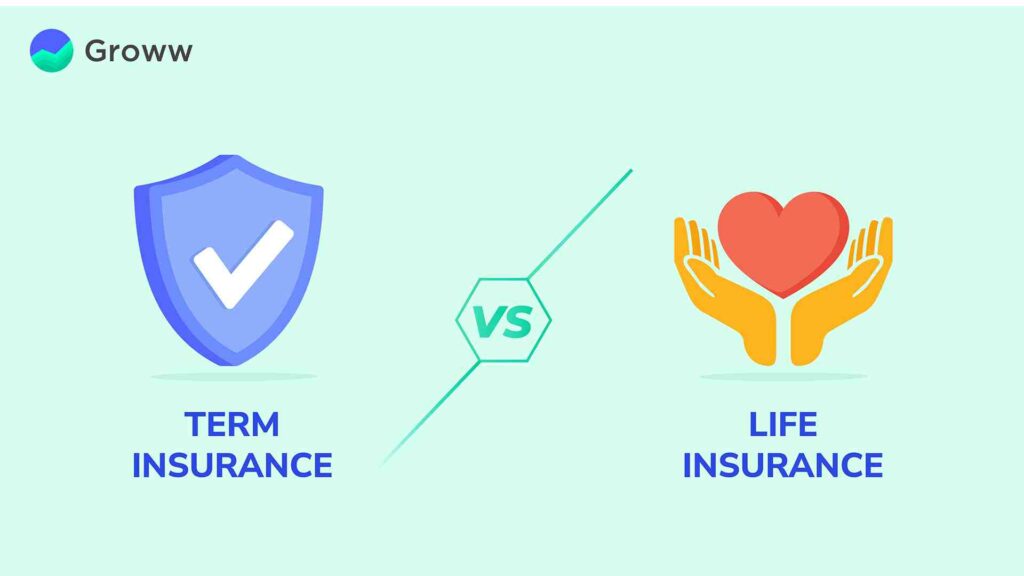
Explore 10 Difference between Term insurance and Life insurance
When it comes to protecting our loved ones financially, insurance is an essential tool. Two common types of insurance that often come up in discussions are term insurance and life insurance. While both serve the purpose of providing financial security, they differ in various aspects. Let’s explore the ten key difference between term insurance and life insurance:
10 Difference between Term insurance and Life insurance
Coverage Duration: Term insurance provides coverage for a predetermined time frame, usually 10, 20, or 30 years. In contrast, life insurance offers protection for the insured person’s entire lifetime.
Premiums: Because term insurance only provides coverage for a brief period of time, its costs are typically lower. On the other hand, because of the prolonged coverage period, life insurance premiums are higher.
Cash Value: Over time, term insurance does not build up any cash value. In contrast, life insurance policies might include a cash value component that increases over time and can be accessed for loans or cash surrenders.
Flexibility: Term insurance offers greater flexibility in terms of the length of coverage. Depending on their individual requirements, policyholders can select the duration of coverage. Once chosen, life insurance policies are frequently fixed and difficult to change.
Investment Component: Whole life or universal life insurance policies, for example, frequently include an investment component that enables policyholders to accumulate cash value over time through investments. There is no investment component to term insurance.
Cost-Effectiveness: Term insurance is typically regarded as more affordable for people looking for pure protection for a set time. For those interested in long-term financial planning and investment opportunities, life insurance is appropriate.
Coverage Amount: Term insurance is a great option for offering significant protection at certain stages of life because it frequently offers higher coverage amounts for a lower premium. The amount of life insurance coverage is typically fixed based on the needs and financial situation of the policyholder.
Convertibility: Some term insurance plans give you the choice to switch from a term policy to a permanent one without going through additional medical underwriting. This feature gives people who might want to extend their coverage beyond the initial term flexibility.
Policy Expiration: Term insurance policies expire at the conclusion of the given term. As long as premiums are paid, life insurance policies are active and continue to cover the insured until death.
Estate Planning: Life insurance is frequently used as a tool in estate planning because of its permanent coverage. The policy proceeds can be used to pay for estate taxes or leave a financial legacy for beneficiaries. Term insurance primarily concentrates on providing protection and income replacement during specific time periods.
In order to select the best type of coverage for your needs, it is essential to comprehend the difference between term insurance and life insurance. Before making a choice, take into account your financial objectives, spending limit, and the required level of protection. It’s always advised to speak with a financial advisor or insurance expert who can offer tailored advice based on your specific situation.
Also Read: Explore Key 10 Difference between Retesting and Regression Testing